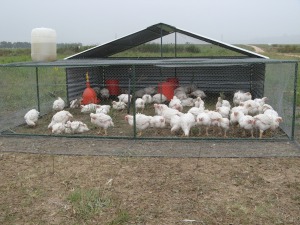Stanford University Organic Study: Is organic REALLY no healthier?
It sure is lovely to be right, isn’t it? Three Michelin star British chef Marco Pierre-White, makes smug look humble in his recent gloating rant over the findings of Stanford University in a comprehensive study of the nutritional value of organic versus conventionally grown produce. The study, a meta-analysis of some 200 research papers, found that there is no nutritional benefit in consuming organic produce instead of conventionally farmed produce.

Organically grown spinach. It may have the odd blemish, but it’s a damn side healthier in my view than the “conventionally” grown stuff.
Since the publication of the study however, it has been criticised in a number of areas. Susan Clark, executive director of the Columbia Foundation, a non-profit organisation dedicated to the furtherance of public welfare across a broad front, was quoted in an article on The New York Times web site: “The researchers started with a narrow set of assumptions and arrived at entirely predictable conclusions. Stanford should be ashamed of the lack of expertise about food and farming among the researchers, a low level of academic rigor in the study, its biased conclusions, and lack of transparency about the industry ties of the major researchers on the study. Normally we busy people would simply ignore another useless academic study, but this study was so aggressively spun by the PR masters that it requires a response.”
It turns out as she notes, that more than one of the researchers had interesting links to Big Tobacco, having both worked for the powerful Tobacco Institute which sought to “prove” that tobacco consumption posed no health risks.
The aforesaid notwithstanding organic (and biodynamic for that matter) foodstuffs are more expensive. If the Stanford study was in fact accurate this would mean that everybody, not just the less well-heeled in our skewed society, could safely disregard organic produce in future.
But you would be wrong in that notion, because nutritional value aside, it is arguably healthier because of the lack of pesticides, herbicides, and organo-phosphate fertilisers in fruit and vegetables, and the growth hormones and antibiotics in animal products. And let’s not forget the inhumane treatment that is inherent in factory farmed animal products.
What I find most odd is the use of the term “conventional” to describe contemporary factory style farming, when in fact for the greater period of our agricultural history, organic was conventional. When man evolved from hunter-gatherer into a pastoralist and a cultivator of crops, pesticides, herbicides, and organo-phosphate fertilisers did not exist, nor for that matter did growth hormones and antibiotics.
As the world’s population grew, the need to produce more food increased apace, which is the justification for contemporary factory farming. But at what cost?

Free range chickens in their pasture pen on Spier Biodynamic Farm. Plenty of room in the cage, access to the open air, but with shelter from the elements. They get fed a small quantity of grain each day, and graze pasture if they get hungry. The cages are moved to a new patch of pasture each day. The birds are slaughtered on the farm, in a certified humane slaughtering facility.
If you take a look around you at so much of the farm land in the Boland, you’ll see how it is farmed. Fumigated soil, plastic sheeting covering the land, cultivation tunnels, frequent spraying of pesticides and herbicides are rampant. This is now considered “conventional” farming.
So much meat is raised in feedlots these days, in order to cope with demand. The idea behind feedlot farming is to fatten the animals as quickly as possible to prepare them for slaughter and the market. The best way to achieve this is to feed them on grain. This achieves rapid weight gain, plus it results in the much sought after marbling of the meat with fat, which makes it tastier and more tender. It also makes it more unhealthy because of the greater fat content. It is also true that feedlot farming has a much lower carbon footprint than pasture fed animals, but the probable solution to that, is to simply eat less meat. Feedlot farming is also anything but humane, subjecting animals to miserable lives that end in stressful slaughter, after an equally stressful road trip by truck to a commercial abattoir.
I don’t know of any animal feedlots in the area, but I do know of many battery chicken farms, the stench of which assails the nostrils as you drive past them, even from a distance. Animals reared in such circumstances suffer untold miseries, from birth to slaughter. Read Eric Schlosser’s Fast Food Nation, Hattie Ellis’ Planet Chicken or Jonathan Safran Foer’s Eating Animals if you doubt this assertion. But it doesn’t have to be that way.
Marco Pierre-White’s point that “conventionally” produced food is cheaper, and therefore more accessible is well taken. Depending where you shop, organic food can be significantly more expensive. But with the continued growth of the organic sector, and the emergence of initiatives like the Green Road, a Biodynamic Agricultural Association of South Africa (BDAASA) sponsored program to reduce the cost of organic produce by bringing producers closer to consumers, the price premium is set to decline.
And the movement back to organic agriculture is not limited to South Africa. At a BAASA meeting I attended last year, I listened to a South African couple who farm in the Boland recounting their experiences during a trip to India, where there is a concerted move toward biodynamic and organic agriculture, and away from what is now considered conventional.
So, for my money, even if I get less in return for it, it’s organic, free range and humanely produced. Mr Marco Pierre-White can spend his money any which way he chooses.